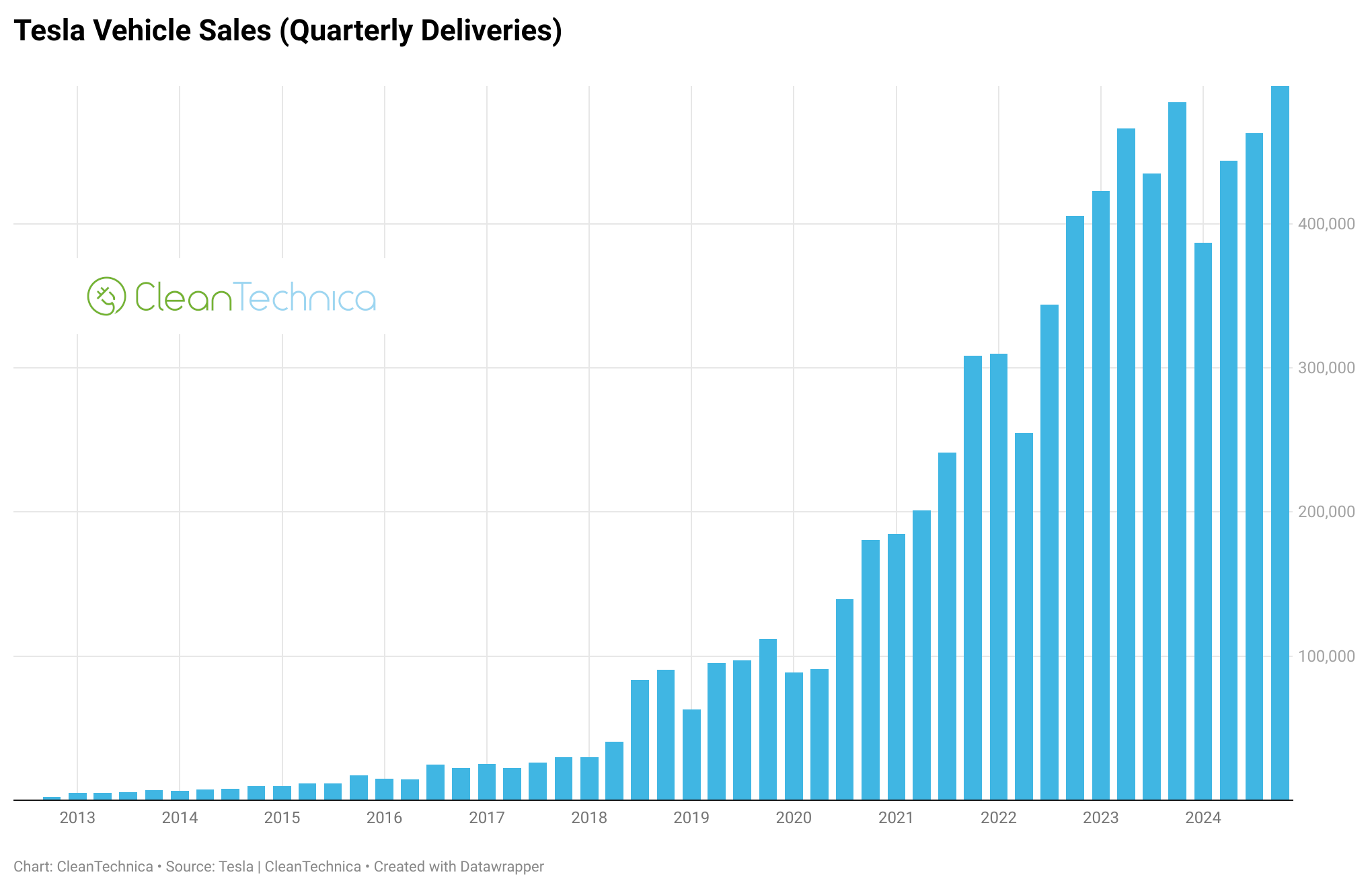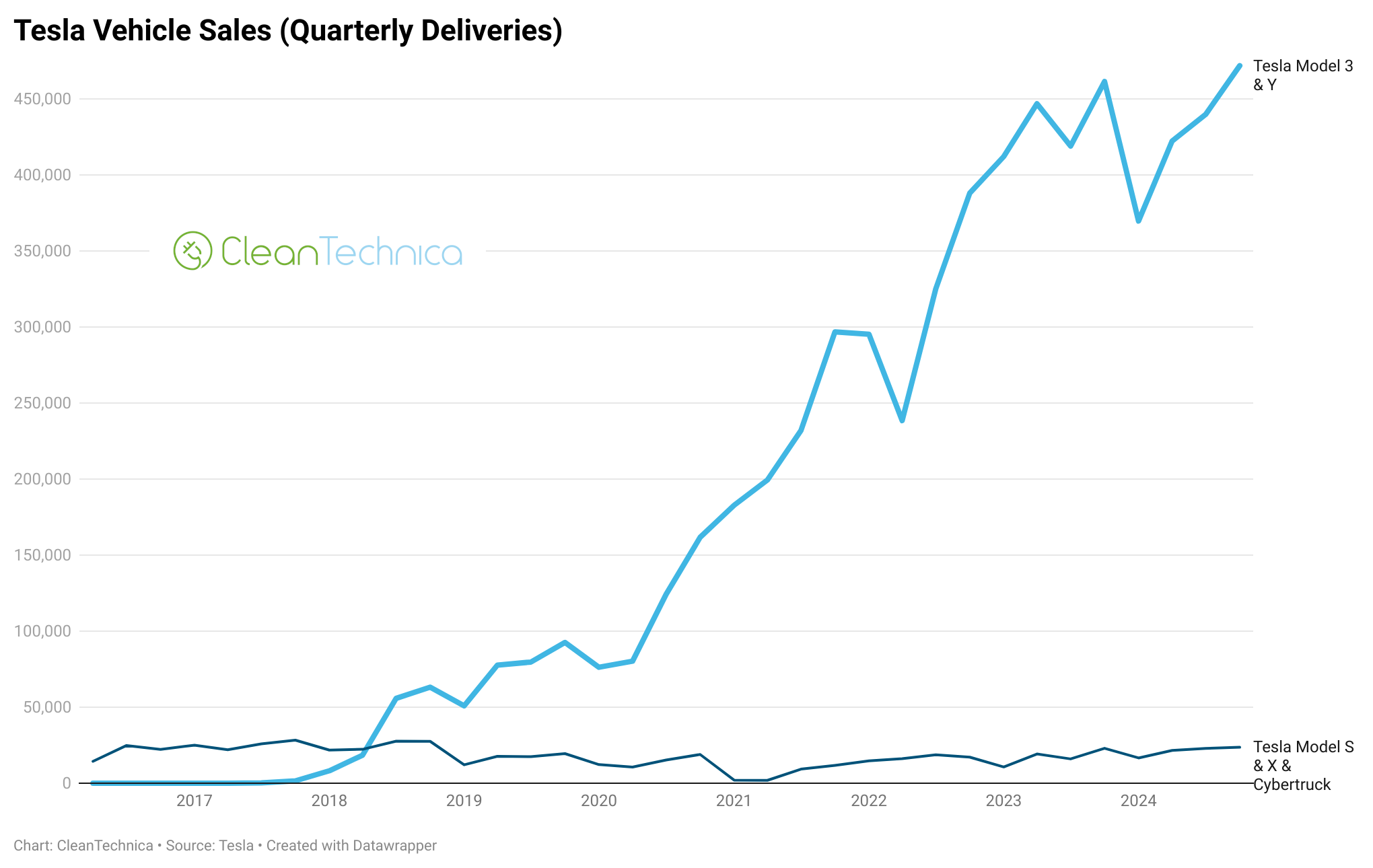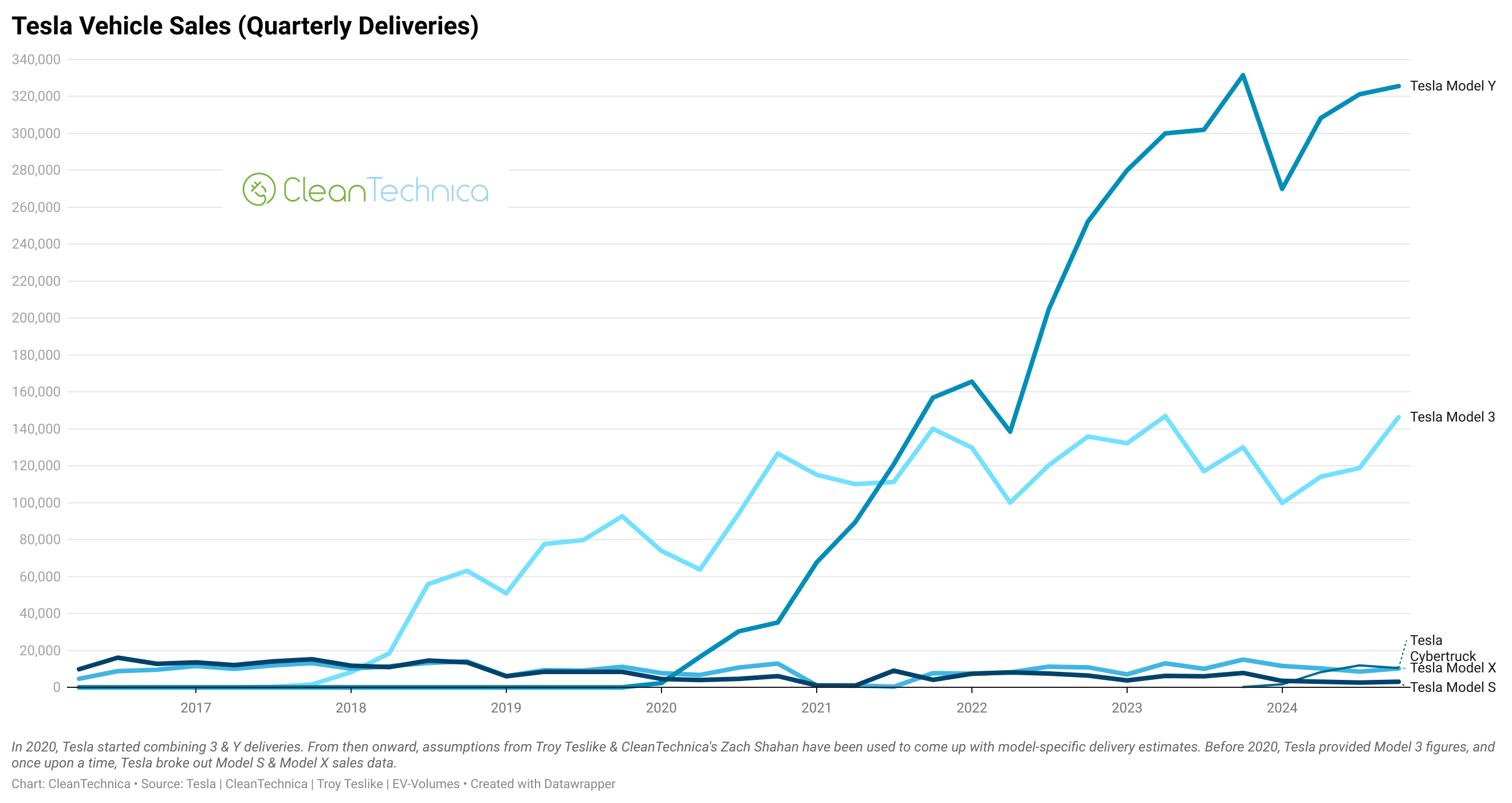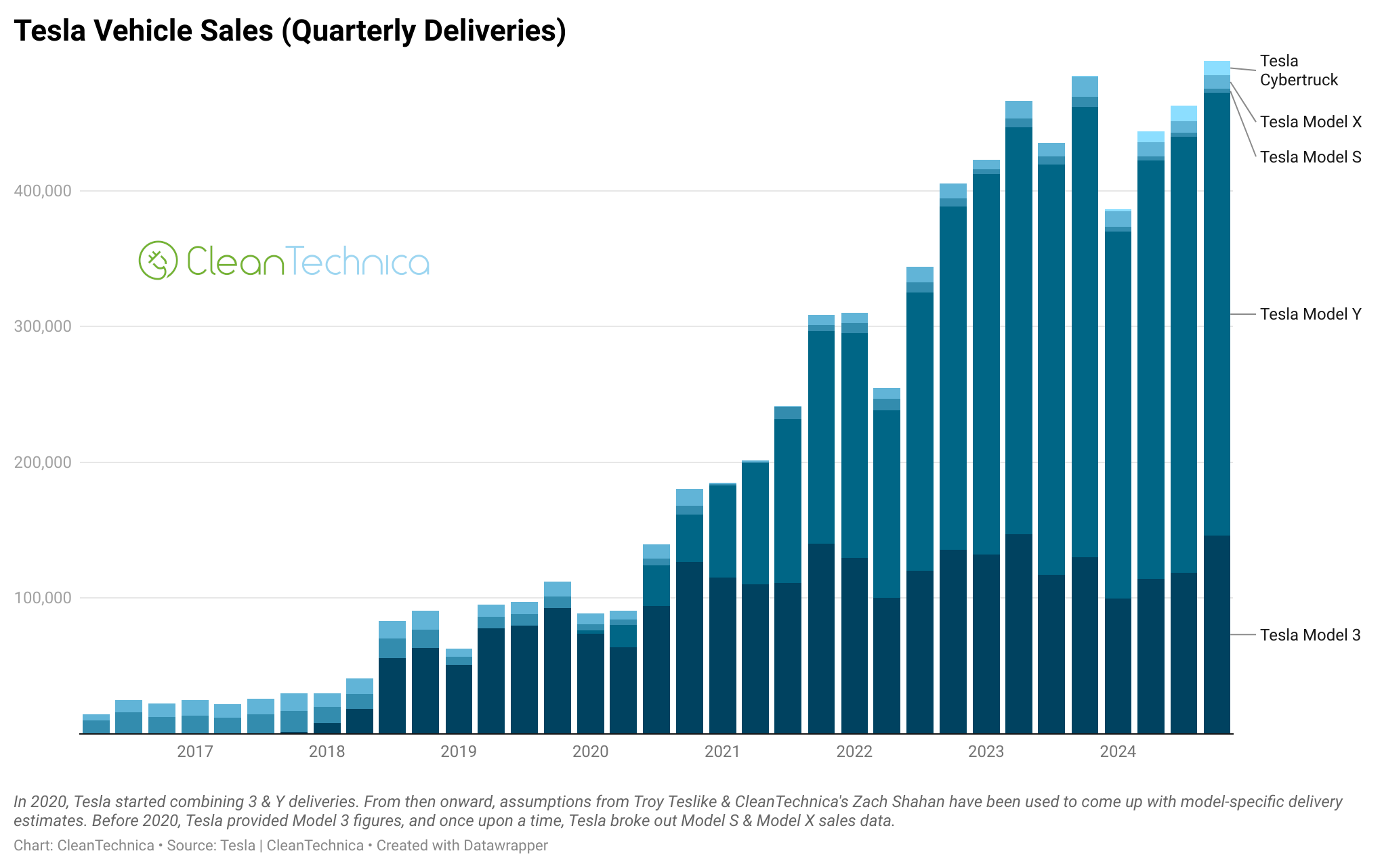
Sign up for daily news updates from CleanTechnica on email. Or follow us on Google News!
It’s always fun looking at Tesla’s long-term sales trends, especially when I get around to plugging all of the numbers into a series of cool charts. Admittedly, though, at times it’s been a little boring. When Tesla sales were just up up up for several quarters (er, years), the story was basically on Autopilot. As we all know, though, 2024 did not follow Tesla’s long-term plan and the company actually had its first year-over-year sales decline since the Model S was introduced. Basically, after a constant and rapid rise in sales for well over a decade, Tesla had its first period of stagnant sales growth (or, technically, small decline in sales). Let’s jump into the charts to say more.
This first chart provides an overall view of Tesla’s quarterly sales from 2012 through 2024. From this point of view, things don’t actually look that bad. Sales in the 4th quarter reached a record high, and there’s clear upward sales growth throughout the year. The 1st quarter was a big drop, but Tesla bounced back strongly and ended the year well.
That said, we have to put some context on this and remember that Tesla is supposed to be seeing 50% growth per year (on average), as CEO Elon Musk said many times. Hanging in there and nearly getting as many sales as in 2023 isn’t close to 50% growth. So, it’s hard to claim 2024 wasn’t a disappointing year for Tesla, and I think it’s natural at this point to be concerned about Tesla’s sales in 2025.
Breaking out the sales by model a little bit, above is a line graph that captures the long-term quarterly sales numbers Tesla provides to Wall Street and journalists. Yes, it’s quite frustrating that Tesla doesn’t split out sales by model. However, given that the Model 3 and Model Y are close siblings, it does make some sense to pair them — and sales of the larger Tesla models all together is also fine, since they add up to so few sales relative to the others. Though, of course, it would be nice if Tesla would just share model-specific sales, like other automakers do.
Now we get into non-official numbers. Though, these are informed estimates of how the sales split out by model. As we can see, both the Model Y and Model 3 were near their peaks in the 4th quarter of 2024. The question is whether they will rise from there, stagnate there, or even drop considerably. The market has been changing fast, there’s a new Model Y, and we don’t know what’s to come in 2025. We will see.
This chart displays the same data but as a bar chart instead of a line graph. The other question with Tesla is how much it can grow that Cybertruck portion of the bar. We will see.
Overall, to now, we have to say that this is an extremely impressive chart of growth. Just looking at it without any context, it looks like a pure success. The issue is that Tesla is supposed to be growing at an average rate of 50% a year through 2030, and for anyone invested in the company [NASDAQ:TSLA], its extremely high valuation is based on that kind of growth.
Of course, at this point, it probably all comes down to Elon Musk finally achieving his dream of rolling out Tesla robotaxis on streets around the world. That’s how the growth continues on such an extreme trajectory through 2030. Without the robotaxis, though, how much more can/will Tesla grow? Or even — will it keep growing? Well, these are the big questions. For now, we can stare at the charts and graphs above and see what comes in 2025.
For fun, though, here’s one more chart, this one an interactive one to show the long-term sales trends of each Tesla model on their own:

Chip in a few dollars a month to help support independent cleantech coverage that helps to accelerate the cleantech revolution!
Have a tip for CleanTechnica? Want to advertise? Want to suggest a guest for our CleanTech Talk podcast? Contact us here.
Sign up for our daily newsletter for 15 new cleantech stories a day. Or sign up for our weekly one if daily is too frequent.
CleanTechnica uses affiliate links. See our policy here.
CleanTechnica’s Comment Policy








